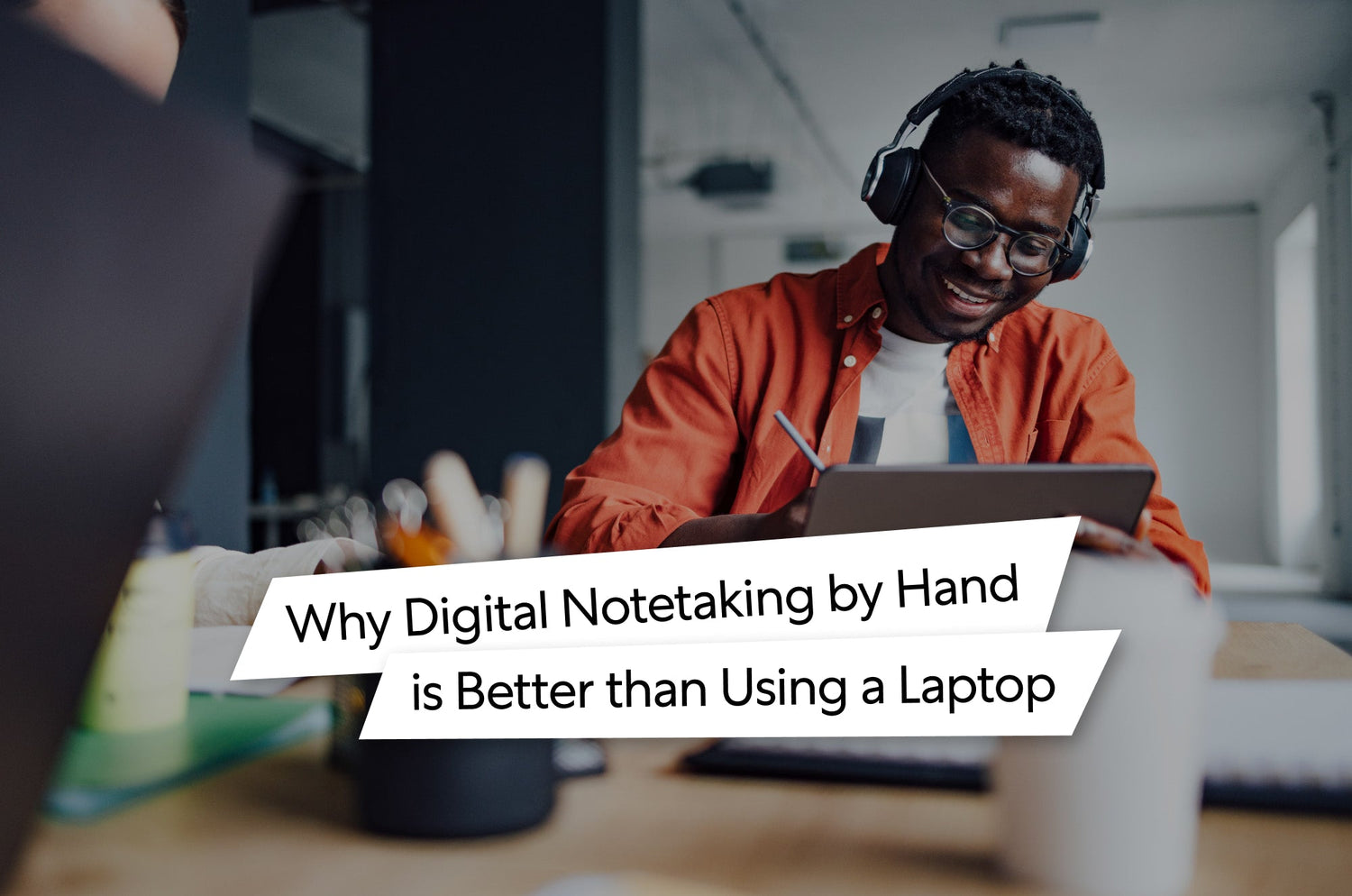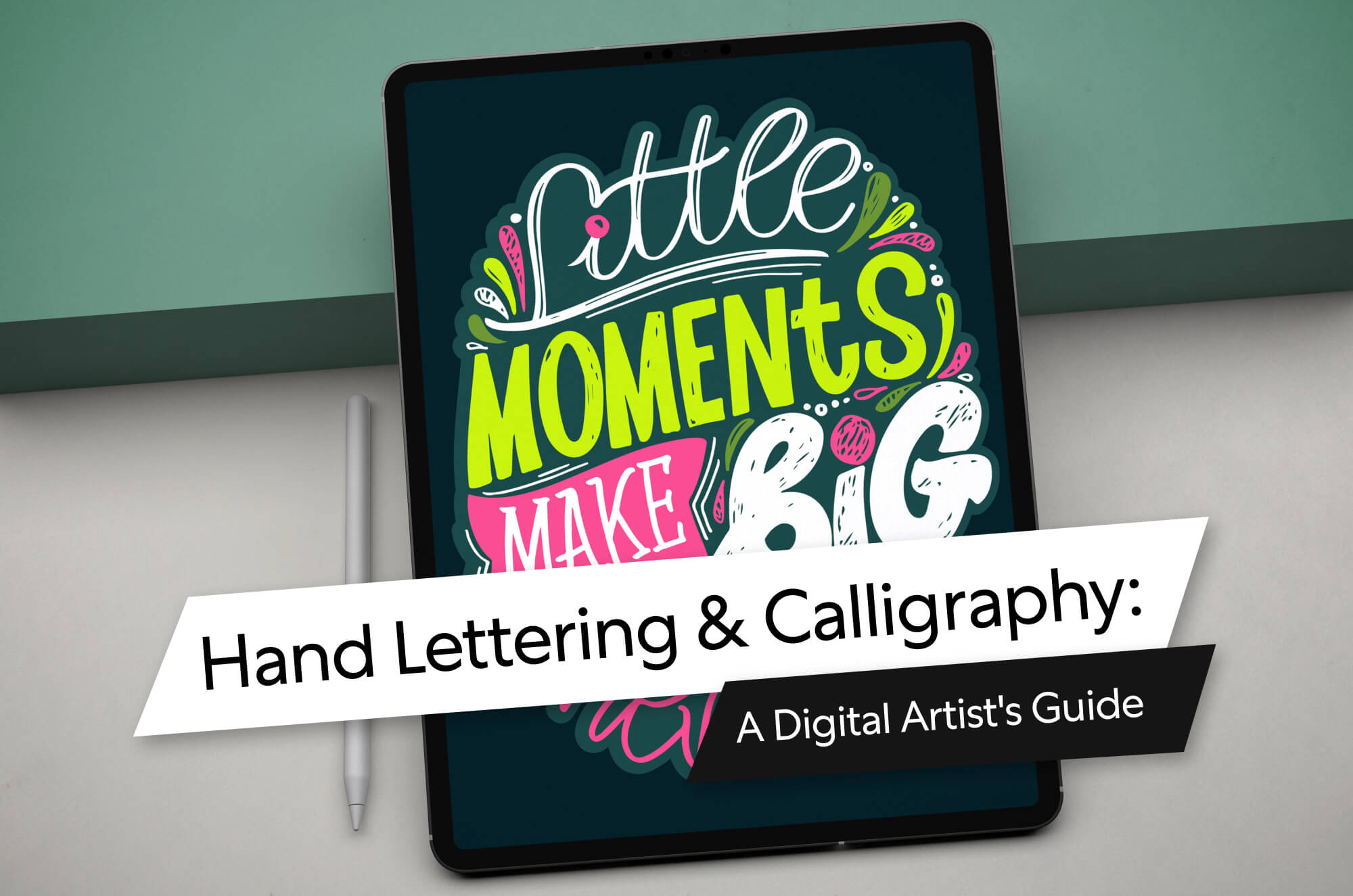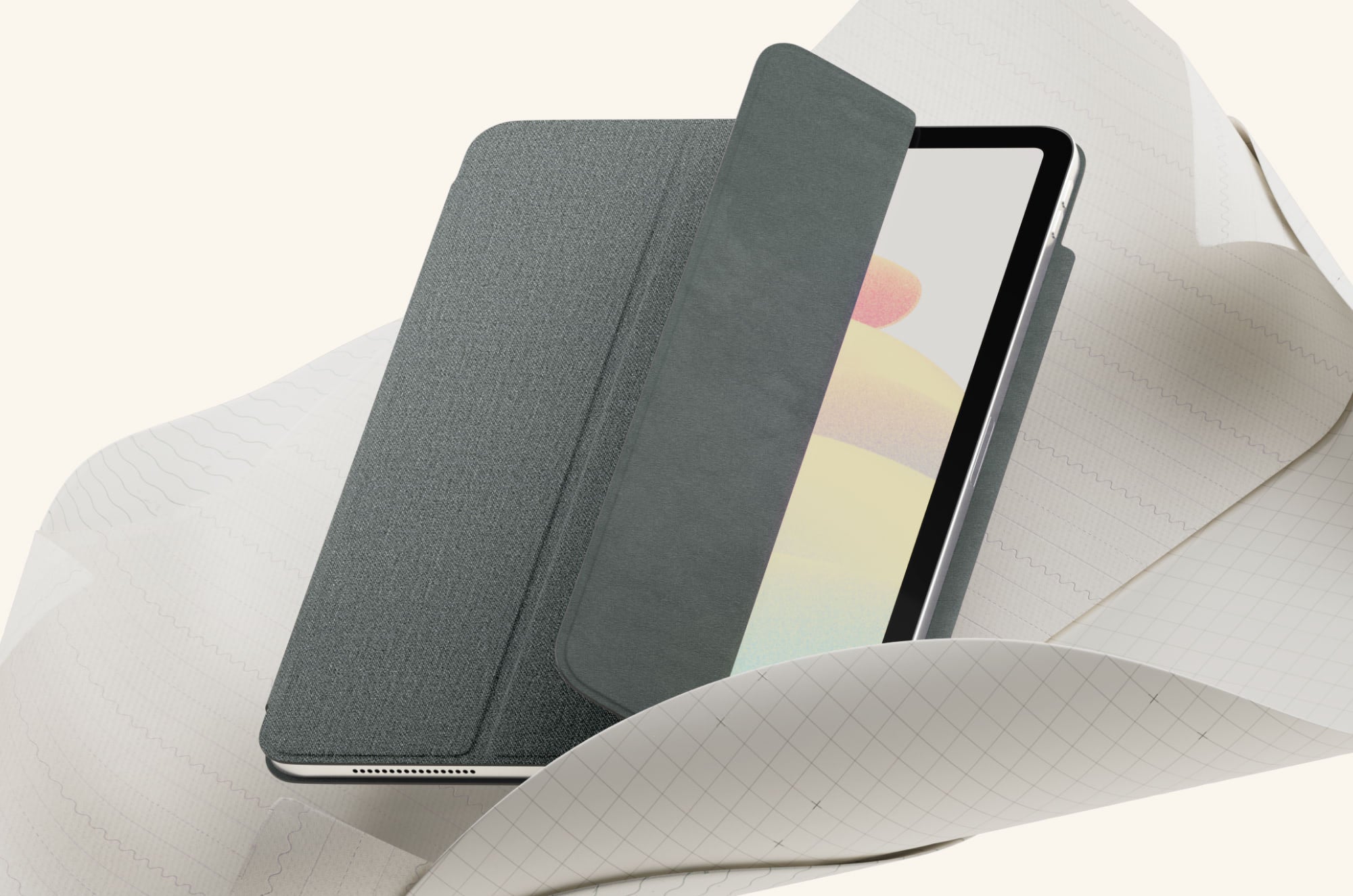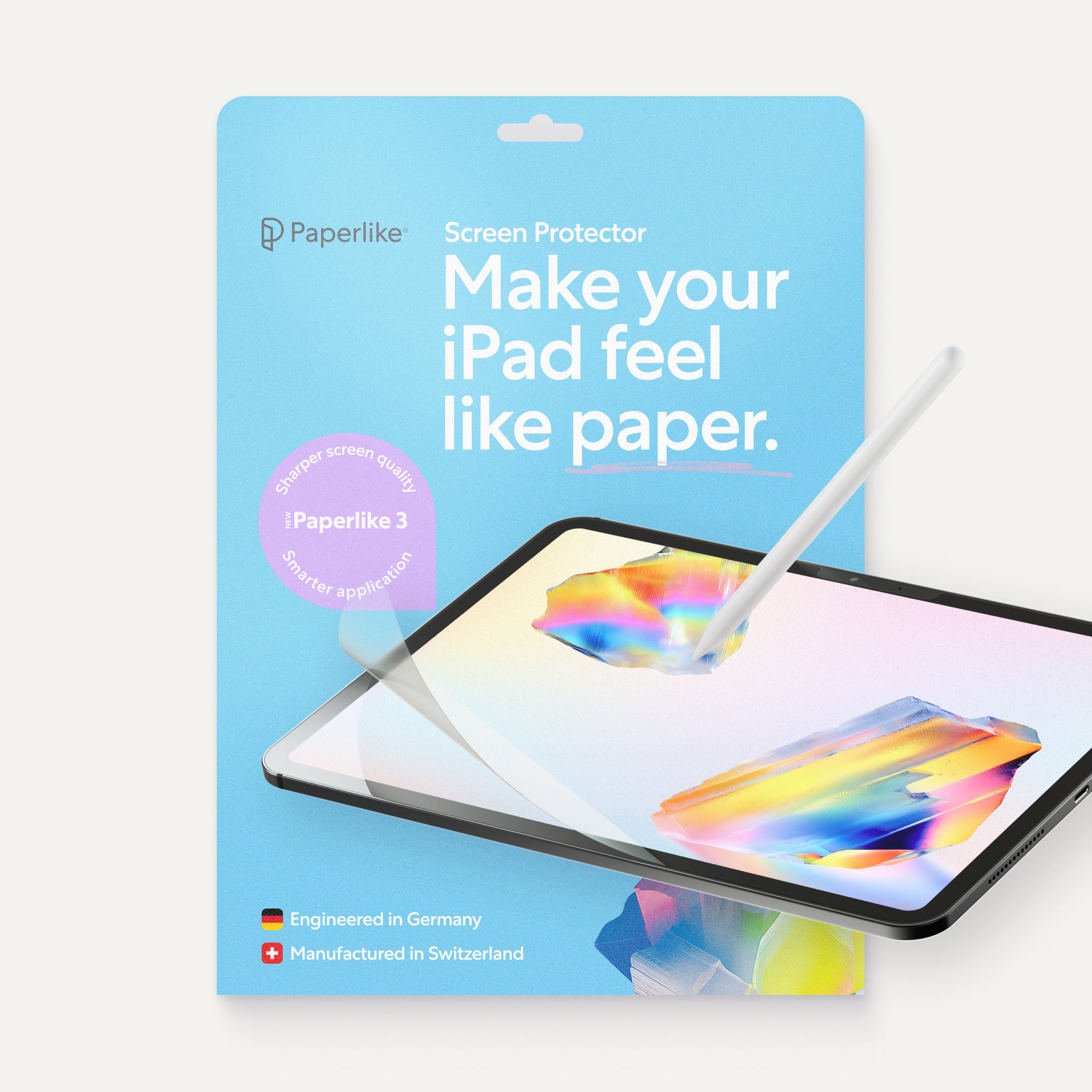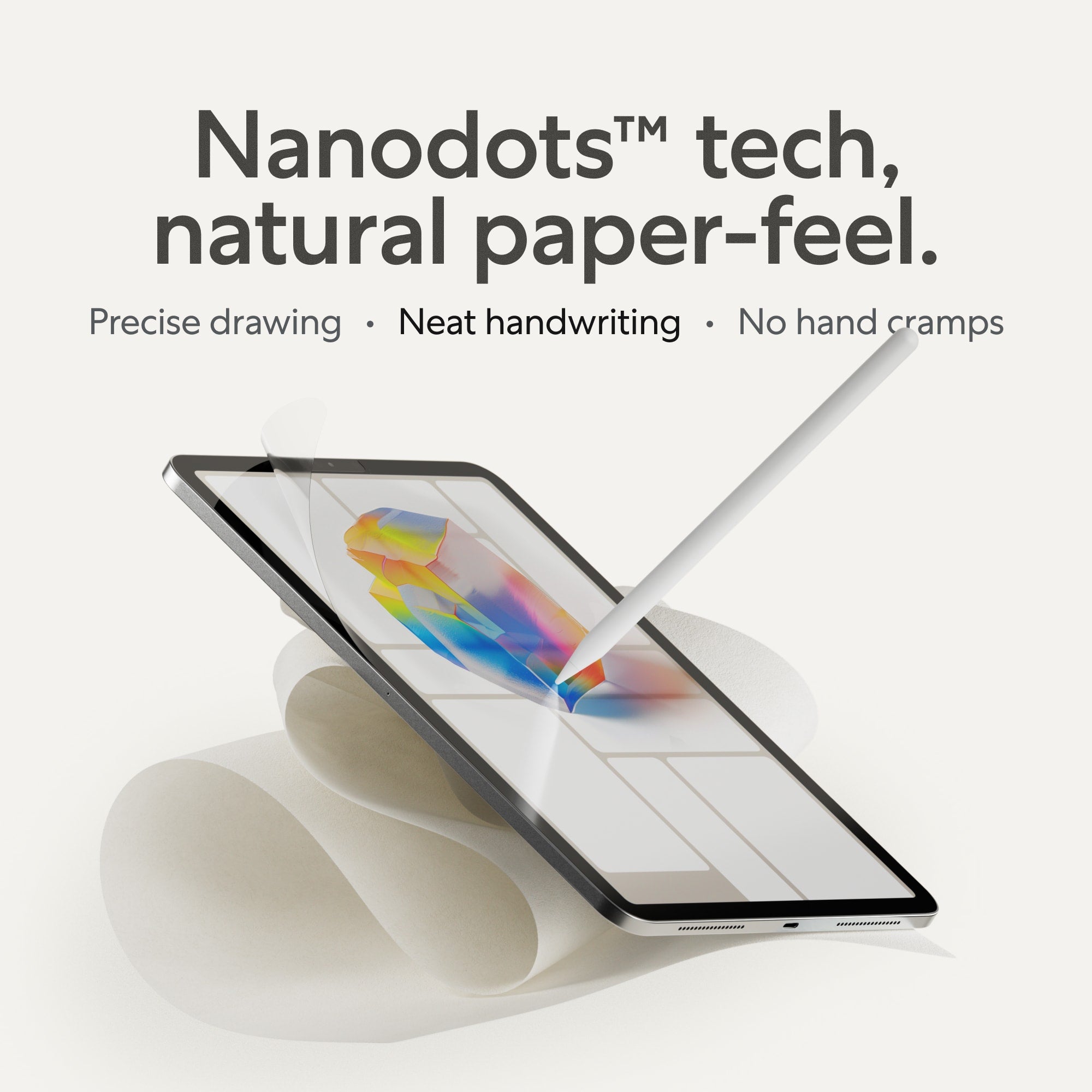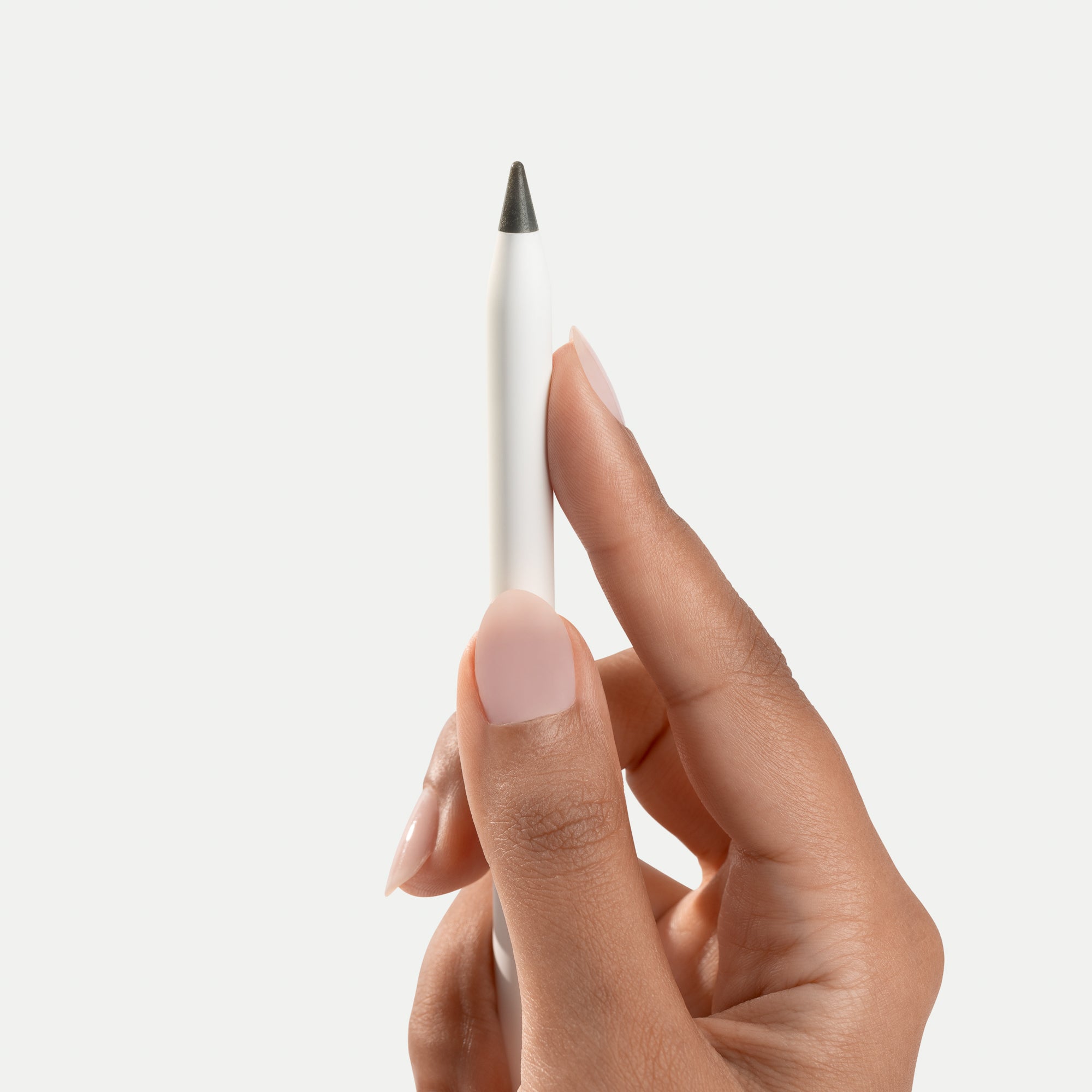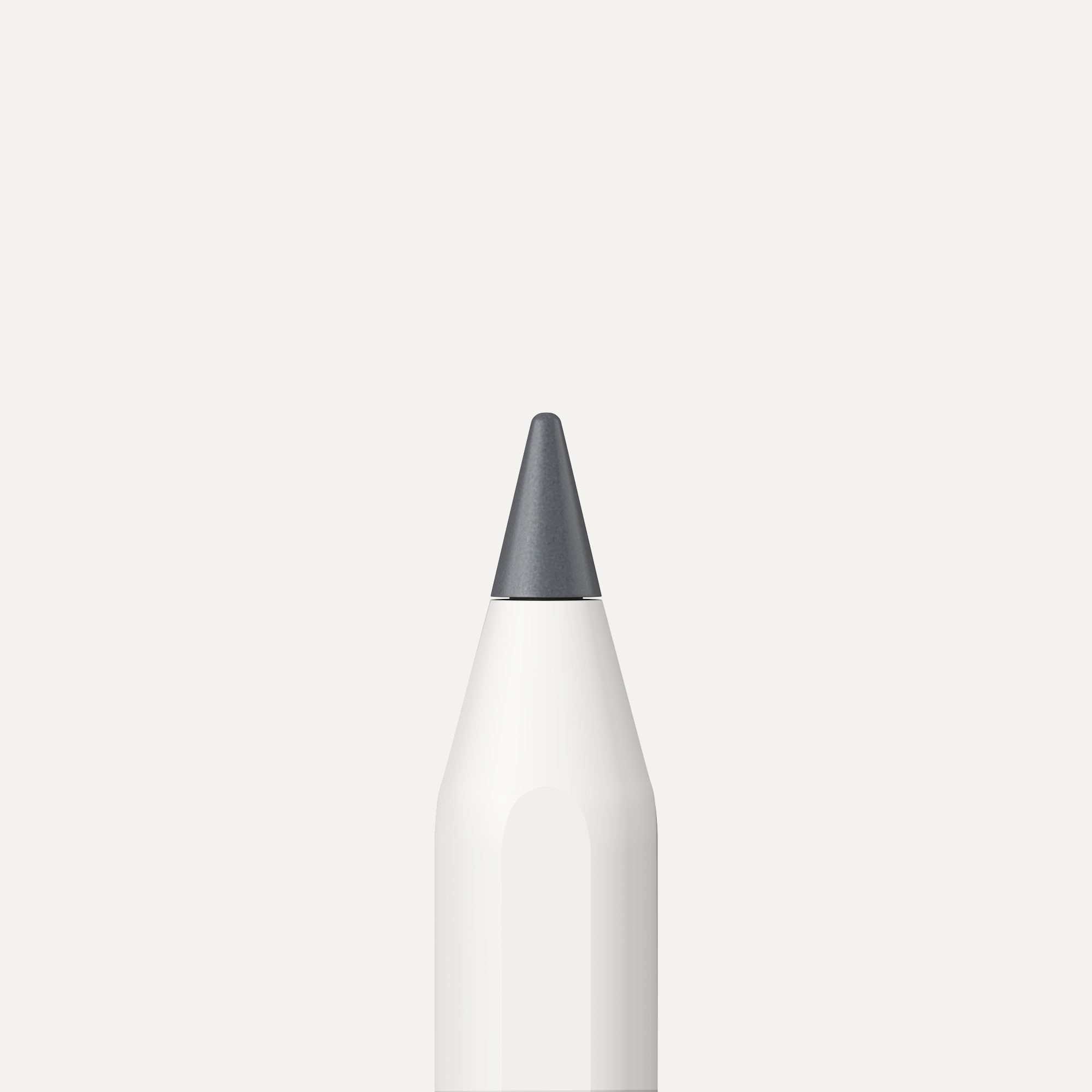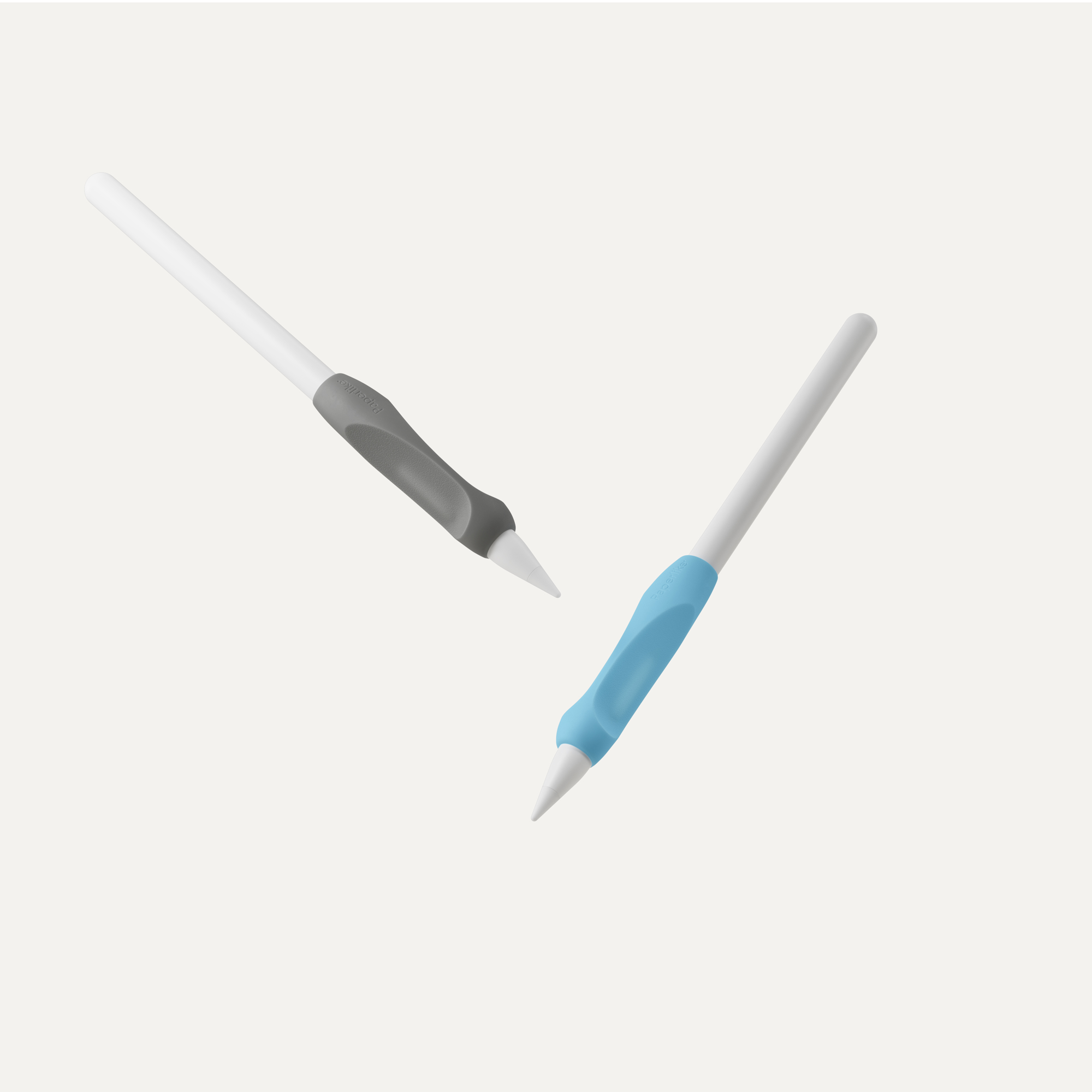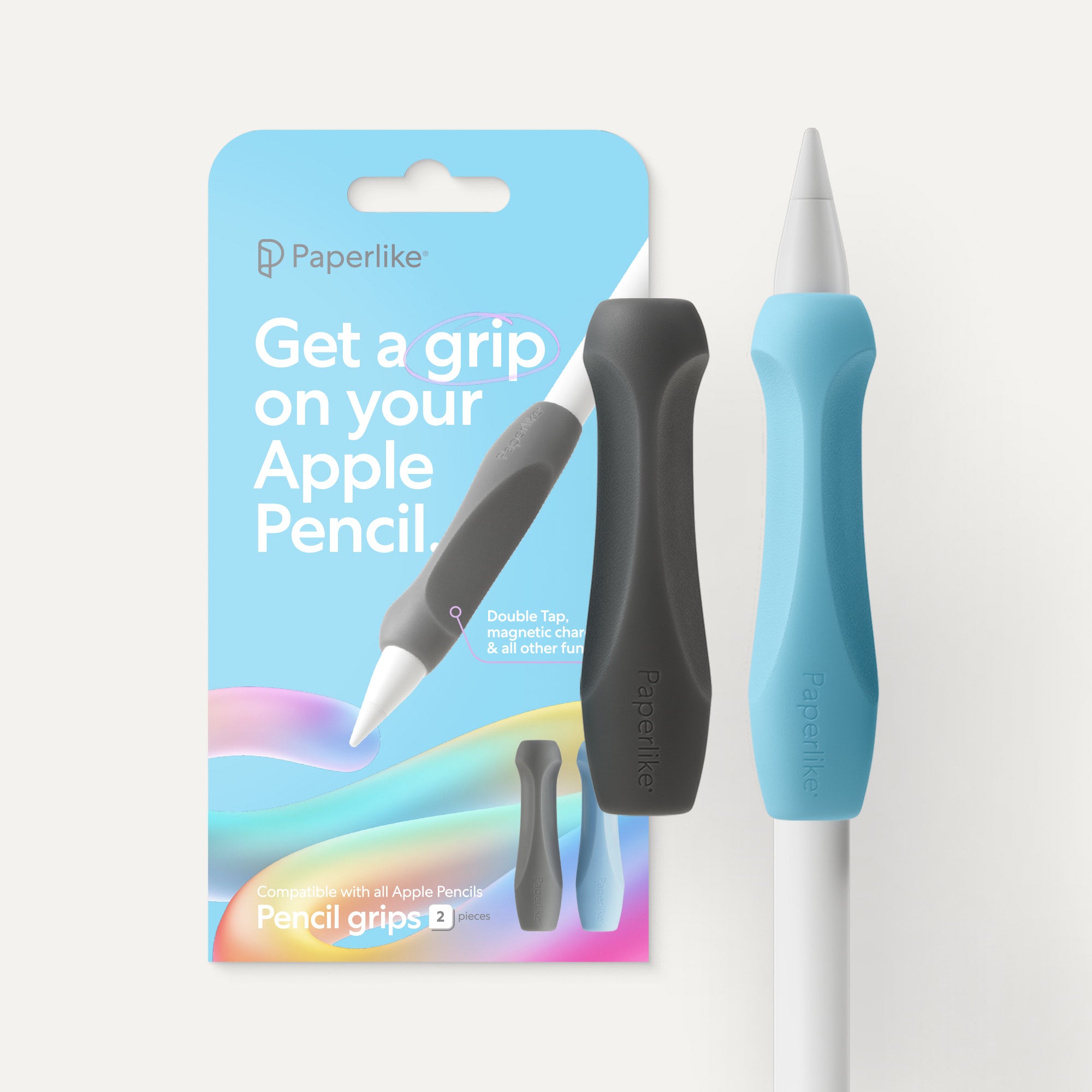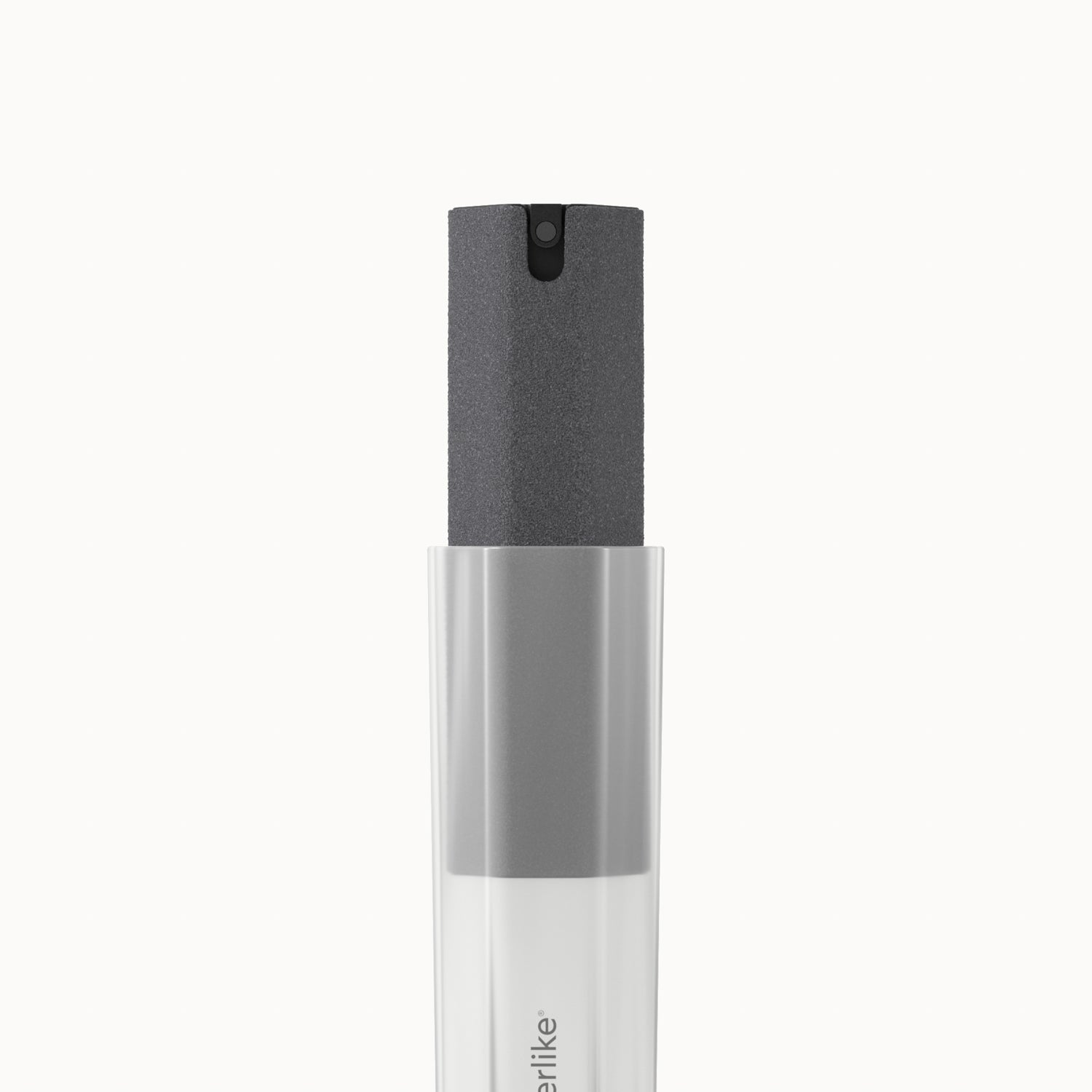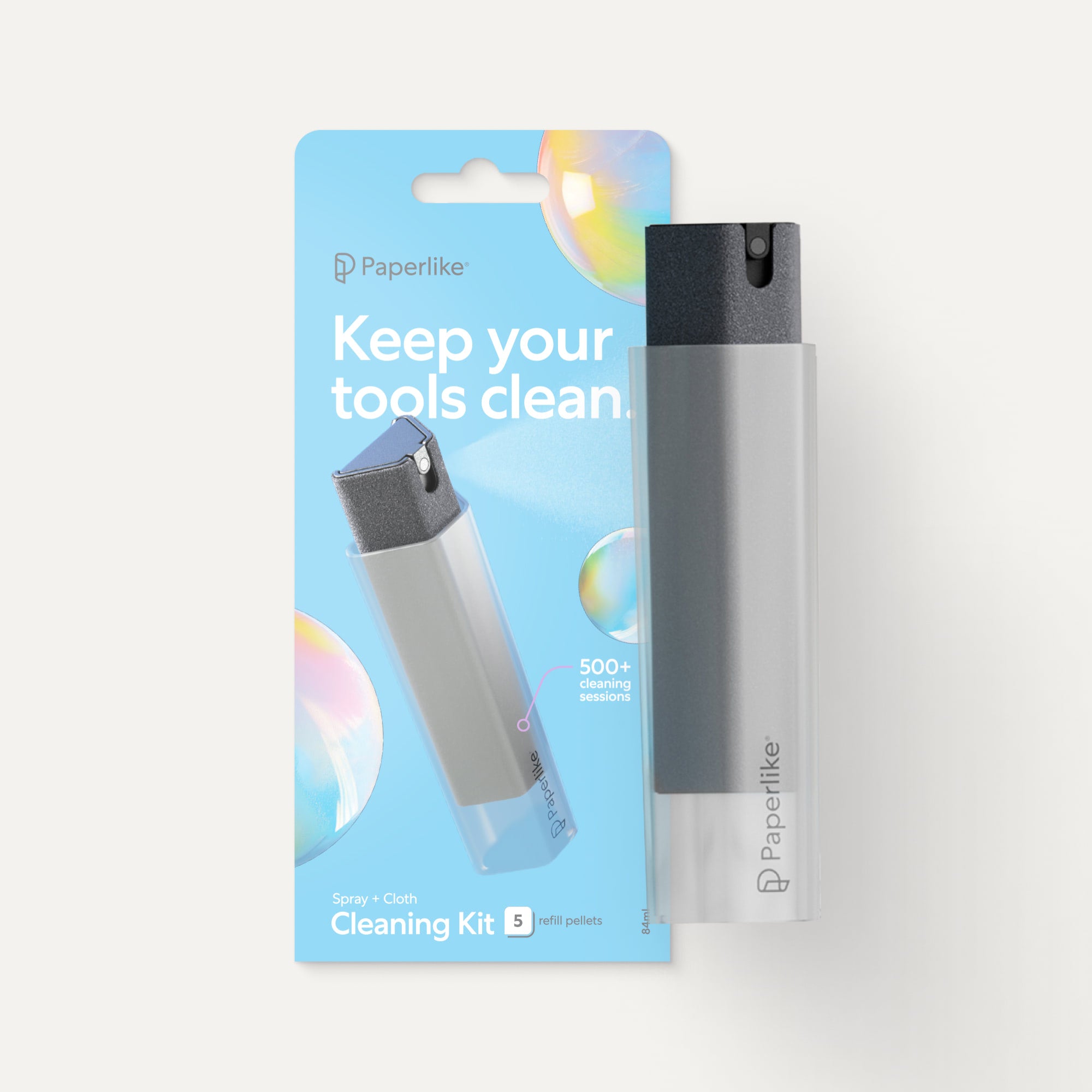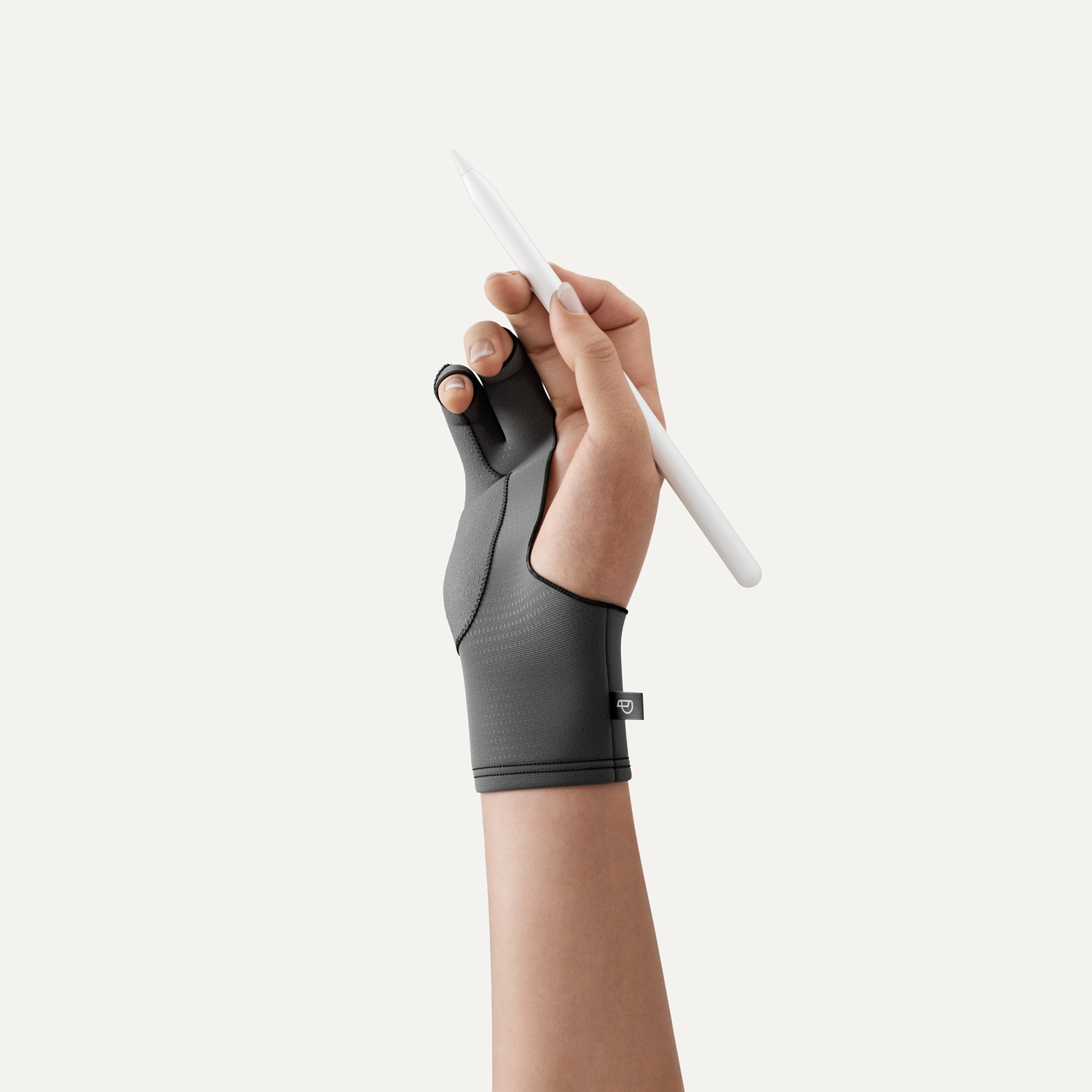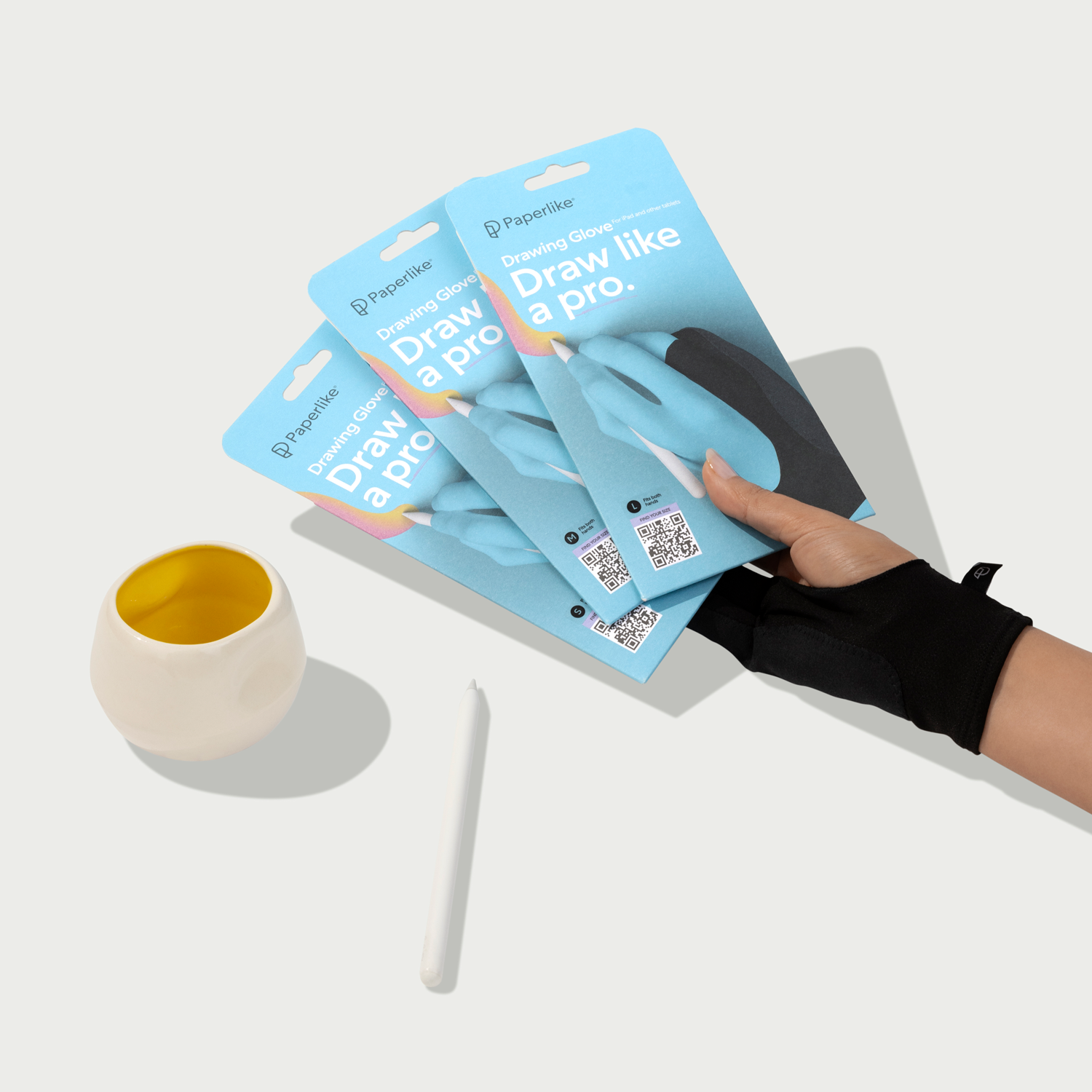When it comes to classroom learning and retention, notetaking is one of the most powerful tools that students have at their disposal.
Studies have found that notetaking facilitates the recall of factual information, as well as the synthesis and application of new knowledge.
But notetaking tools have evolved over the past twenty years. Handwritten notes have been replaced with word processing software, digital notebooks, notetaking apps, audio recording, and more.
Some of these alternatives to pen and paper notes — especially laptops — may actually damage knowledge retention and test performance.
Let’s take a closer look at digital notetaking, the problem with laptops, and a better solution for taking your own notes in class.
#toc#

#caption#Image: insta_photos / Adobe Stock Photo
#alt#Image of a teacher smiling while standing over a student looking at a tablet.
Modern technology has changed education
You don’t have to go very far to find the incredible number of ways that modern technology has revolutionized education.
From teachers co-opting kid-friendly games like Minecraft into their curriculum all the way to open-ended educational resources like Khan Academy, technology has already left its mark on the education system.
The COVID-19 pandemic forced even more learning to take place in digital classrooms. While many schools stayed open despite the pandemic, campus-based learning was suspended in schools where the virus had spread. Other schools offered remote learning opportunities from the start, supplying students with tablets or Chromebooks to use at home.
At the same time that technology has impacted education, research has also found that a teacher’s experience with technology in the classroom varies at a personal level. Educators adopt technology tools at varying rates, often based on their comfort level and without a district-enforced plan.

#caption#Studies show that college students rely heavily on paper notes. (Image: Deniz Kurtoglu / Paperlike)
#alt#Image of a quote that says, “Despite the advantages tools offer, 94% of college students say that paper is still essential to helping them achieve their academic goals.”
Many colleges in the United States continue to invest in online learning or hybrid programs, which means that digital learning is likely here to stay. In fact, in a 2021 survey, 73% of US students said they want to continue taking online classes after the pandemic.
If institutions and educators have started to rely more on digital technology solutions, it makes sense that students have also turned to computers and software to enhance their own learning experience.
In a world where smartphones, tablets, and laptops can make learning mobile and provide access to a wide variety of resources, students need technology just to keep up.
But what does any of that have to do with digital notetaking?
Good question! If technology is practically a requirement in modern education, then asking students to rely on analog forms of self-development almost places them at a disadvantage.
At the same time, the process of handwriting notes has some major psychological advantages that break away from the digital trend. In fact, 94% of college students say that paper is still essential to helping them achieve their academic goals.
But do the benefits of technology and digital notetaking outweigh the benefits of longhand notes?

#caption#Laptops have become common tools that students use to take notes in class. (Image: Deniz Kurtoglu / Paperlike)
#alt#Image of a table showing laptop usage among students.
Digital notetaking improves learning — unless you’re using a laptop
Almost every college student is familiar with digital notetaking via a laptop and a word processor.
You get to class, open the software of your choice (Microsoft Word or OneNote, Google Docs, Notepad, etc.), and you transcribe everything that the instructor says during the lecture.
This is a common scenario. About 88% of students say that they own a laptop, but only about 63% of them use it in class, according to McGraw-Hill Education.
On the surface, this approach to digital notetaking makes sense. After all, the number of learning and technological improvements provided to the educational process via digital tools can be staggering.
Between document storage tools like Dropbox and iCloud and real-time syncing with Google Drive and Microsoft OneNote, it’s easier than ever to use your preferred device to collect your notes and achieve results.

#caption#Studies show that students who take notes by hand have much higher test performance on conceptual questions than those who use laptops. (Image: Deniz Kurtoglu / Paperlike)
#alt#Image of a table showing the difference between test scores of students who take notes on a laptop versus by hand.
Just one problem: Results including retention and test scores can vary wildly, especially for laptop users.
According to multiple studies, laptop users consistently perform worse when answering conceptual exam questions. This gap takes place because students tend to transcribe lectures verbatim rather than processing the information and reframing it in their own words.
The result is equivalent to a learning impairment. Students hear and capture the content, but they don’t actually absorb the information when it is presented to them. When it’s time to take the test, laptop users have notes and facts but no drawn conclusions, which makes open-ended and conceptual questions harder for them to answer.
Laptops also create a lot more opportunities to multitask during class, which can be disruptive. Instead of focusing on the topic at hand, students may find themselves browsing social media apps or searching the web. These distractions can lead to lower quality and quantity of notes, making it even harder to recall the lecture material.

#caption#Handwritten notes are better for retention than notes typed on a laptop. (Image: Deniz Kurtoglu / Paperlike)
#alt#Image of a pros and cons list for both handwritten notes and laptop notes that shows that handwritten notes offer better retention and higher quality notes.
What pen and paper gets right
Most notably, one of the above studies points out that laptops and print materials are used at about the same rate when it comes down to exam prep.
This indicates that writing notes by hand has major benefits when it comes to education, even though laptop-based notetakers actually have a larger quantity of notes than their longhand counterparts.
Taking notes by longhand slows you down — but in a good way.

#caption#Studies show that taking notes by hand offers better retention long-term than typing notes on a laptop. (Image: Deniz Kurtoglu / Paperlike)
#alt#Image of a quote that says, “Those who took notes by hand could remember the lecture material longer and had a better grip on concepts presented in class, even a week later.”
Average handwriting speeds for adults are typically achieved by ninth or tenth grade and range from about 117-140 letters per minute. That’s about 23-28 words per minute. Compare that to the average speed of typing with a keyboard in 1999, which was about 40 wpm. With desktop computers and laptops everywhere these days, those numbers are likely even higher now.
While typing is the faster way to take notes, it often leads to copying the information without even thinking or comprehending the material. Because handwriting is slower, it’s almost impossible to take notes verbatim, which means that you’ll need to pick and choose what to add to your notes.
The extra time that it takes to handwrite your notes gives you a chance to absorb information, draw conclusions, jot notes and draw diagrams, all while conceptualizing information in a way that makes sense to you.
Handwriting also promotes better memory recall.
When you write by hand, you’ll need to put the information into your own words, which provides the brain with memory cues when reviewing the material. You’re also much more likely to only jot down the main points and supporting ideas, resulting in the best quality of notes.
And that’s not all. The movement of your hand while handwriting words activates different parts of the brain that allow better memorization long-term.

#caption#Image: Paperlike
#alt#Image of a man sitting on wooden blocks, writing on an iPad.
Searching for a middle ground
If you’ve made it this far, you might be confused.
Since we’re trying to make the case that digital notetaking is better than pen and paper, it might sound like we’ve gone out of our way to prove the exact opposite.
That’s not exactly the case.
We’ve established that there are clear benefits to longhand notetaking and that there are severe drawbacks to notetaking on laptops despite the technological advantage that laptop users gain when it comes to convenience.
However, we’re not saying that you should avoid technology when trying to take great notes; we’re saying that you need a middle ground.
A digital tablet is an obvious solution to this problem.
It provides an intersection where technology and traditional notetaking methodologies meet. Using a handheld device like an iPad Pro and an Apple Pencil allows notetakers to write their notes in a longhand and freeform fashion without sacrificing the benefits that come along with bringing technology into the classroom.
According to one study, more of the brain gets stimulated by self-generated movements, which results in the formation of more complex neural networks that lead to better understanding. We talked about this a little bit in the previous section, but this study proves that this happens regardless of whether you’re using a traditional pen or pencil on paper or a stylus on a digital tablet.
Some of the best notetaking apps in the App Store have essential features that leverage technology to reinforce learning, and many offer free plans or discounts for students:
- Notability (available for iOS, Android, and desktop) allows students to record audio and sync it with their notes.
- GoodNotes (available for iOS and macOS; beta versions for Android and Windows) divides notes into attractive digital notebooks so that it’s easy to store and organize your documents in a digital space.
- Microsoft OneNote (all devices) connects to the OneDrive platform and allows you to integrate media, record audio notes, tag important items, build to-do lists, and more.
- Evernote (all devices) does everything from note capture and tagging all the way to document scanning, device syncing, and even web clipping via a Google Chrome extension.
These apps and others come loaded with handwriting recognition, cloud storage, and more, but the technology works in the background so that you can take notes with ease.
Keep in mind that using an iPad isn’t the only way to take notes in a digital format. There are other options, such as the Remarkable 2 tablet, that are designed for taking handwritten notes. You can also use pen-to-paper solutions like Livescribe, which uses a pen and notebook (rather than a tablet and stylus) to capture notes and upload them to the cloud or sync them with your digital device.
Benefits of digital notetaking by hand
Digital devices are here to stay and are likely to become even more prominent in classrooms in the future. We’ve covered why handwriting is still better than typing when it comes to taking notes and offered digital notetaking as a good middle ground.
If you’re still unconvinced, let’s take a look at the plethora of reasons that you should consider transitioning to digital notes.
Accessible anywhere, anytime
Digital notetaking apps come with pencils, pens, highlighters, and most other tools you’ll need to take great notes — all built into the program.
This eliminates the need to carry a bunch of physical notebooks and notetaking supplies, meaning that it’s much easier to take your workspace on the go. The only thing you’ll need is your tablet and stylus of choice.
Tablets and iPads also sync across devices and allow you to study or take notes wherever you want. Whether you’re at your desk, at a coffee shop, or enjoying the fresh air outside, you’ll have all your materials and tools on hand.
Easier to personalize / more customizable
If you’re using pen and paper, you’ve only got a few options when it comes to how your notes look. You can choose different notebooks to differentiate between classes, and you can use colored pens or highlighters for different topics.
Digital notetaking makes this process even easier. With built-in notebook covers and templates for different styles and methods of notetaking, you can designate designs or colors for classes, topics, and more.
Plus, changing your pen or highlighter color is as easy as tapping a button. Many apps include a Favorites toolbar to quickly access the pen styles or colors that you prefer to use the most.
Apps like Apple Freeform or Nebo act as digital whiteboards, which might work better for visual learners who like to draw or create mind maps.
While all of this may not seem like much, it can save a lot of time setting up and taking your notes and make them easier to sort through later.

#caption#The ability to add drawings, images, tables, diagrams, and more into your digital notes is a huge advantage. (Image: Deniz Kurtoglu / Paperlike)
#alt#Image of a quote that says, “In addition to an enhanced visual and tactile learning process, apps also can improve notetaking by allowing more complex images and other media to be integrated into students’ written guides.”
Additional features & abilities
One of the biggest benefits of digital notetaking is combining the ability to handwrite notes with additional visuals, like drawings, images, and web clippings.
Studies show that inaccuracies in students’ notes are most common when trying to copy diagrams, equations, numerical figures, and other similar items.
With apps like Apple Notes, you can take a picture and add the image to your notes. Some instructors may give you access to your class’ PowerPoint presentations, making it even easier to drag and drop those items into your notetaking app for later reference.
Many notetaking apps also include the ability to record audio, so you can listen to the full lecture at a later time. Notability and GoodNotes take things one step further and sync your handwritten notes with the audio, allowing you to figure out what prompted you to jot something down.
Both Evernote and OneNote include web clippers that you can use from your desktop to search the internet and pull in relevant web pages to your notes. Apps like LiquidText and MarginNote 3 are great for PDF annotations and linking concepts.
All of these extra features help streamline your workflow to create comprehensive notes.
Better organization
Digital notes are much easier to organize and parse through later when it’s time to study for a test.
You can use folders and nesting capabilities to organize your notes by class, topic, date, or whatever makes the most sense to you. Some apps include a Favorites tab or the ability to bookmark notes or pages within your notes to quickly access them later.
Built-in optical character recognition (OCR) capabilities found in most apps make your notes highly searchable. This search functionality can often parse through typed text, handwritten text, image text, and PDFs to find your search terms quickly.
While misplacing or losing your notebook may not be a common occurrence, things happen. Digital notes eliminate this problem. With cloud storage, you can still access your work from another device if you misplace your tablet.
Sharing & collaboration
Whether your friend missed a day of class or you’re working on a big project with classmates, digital notes can make your life much easier.
Notetaking apps usually include several ways that you can share your notes (as a PDF, image, or app file), so you’ll never have to copy down missed notes by hand again. Often you can choose to share the entire note or a specific section or page and decide whether other users can view or edit your work.
This can really come in handy for group project management. Many apps offer real-time collaborative abilities, allowing you and your classmates to work together on an assignment without ever having to meet up.

#caption#Image: Paperlike
#alt#Image of an iPad with a Screen Protector by Paperlike and an Apple Pencil lying on top.
Take your digital notes to a new level with Paperlike
At Paperlike, we’re big fans of helping creators and doers accomplish big things.
Our screen protector has helped thousands of notetakers — from college students to business professionals — transfer their process from paper to digital.
We do this by eliminating the main problem that users experience: Tablet surfaces are made from glass — and glass is slick.
Trying to write or draw on a slippery surface is frustrating, and it can even affect the speed and accuracy of your handwriting. Paperlike transforms the surface of your device into something that feels like paper so that taking notes feels exactly the way it would if you were using your old notebook.
Digital notetaking is essential for modern students. The ability to quickly look things up on an iPhone or take a quick screenshot expedites that learning process in ways that analog-only notetaking never will.
But pen and paper processes still have their benefits. A digital tablet and a Paperlike can help you find a middle ground that helps you excel in your next class.


